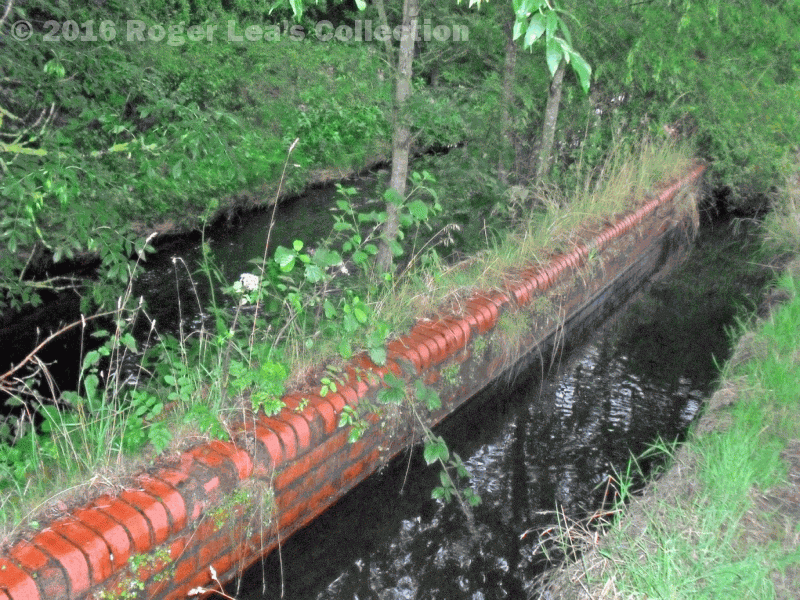When first built, the mill pond at New Hall Mill was fed by water from a leat which carried the whole flow of the E brook. The next mill down the valley, at Penns, built at about the same time in the 1580s, almost certainly used the same method, diverting the stream along a leat to a small pond. The mills worked satisfactorily using this method so long as fairly simple machinery was being powered by the waterwheels, but there were certain disadvantages. Severe storms could cause the leats to burst their banks, and prolonged droughts reduced the flow of water.
These problems were more pronounced where mills were established on smaller streams, as at Langley Mill on a tributary of Langley Brook. The solution was to make a large reservoir from which water could be drawn as required, and this was done at Langley Mill in 1604 when Langley Mill Pool was created. A number of new water mills were established in Sutton in the eighteenth century, and most of these used water from large reservoirs, notably the pools in Sutton Park.
Joseph Webster took on the lease of Penns Mill and in 1750 converted it to wire-making, He had previously made wire at two watermills in Perry Barr - the power generated by these two mills combined was less than Penns Mill produced. Colonel Horsfall in The Iron-masters of Penns wrote “The power requirements for wire-drawing were substantially greater than those of a forge”, a forge being “a simple mill operating a tilt hammer”.
Wire-drawing at Penns prospered, and soon required more power than the mill could supply. Major works were required, and Webster’s solution was “building the lake and canalising the water course with the object of increasing the power supply”. Penns Lake, which is still there, is fed by a leat which takes water from the stream further up the valley than the old leat, so the water level is a few feet higher than the old mill pond. Some of the earlier sluices could still be seen below the lake surface until a few years ago.
The wire mill flourished for the next hundred years with the extra power from Penns Lake, until the business removed in 1859 to new premises at Hay Mills, since when the lake has been an ornamental fishery. Upstream at New Hall Mill the power from the original sixteenth-century mill pond, carrying the whole flow of the E Brook, was sufficient to keep the millstones grinding corn all through the nineteenth century. By 1910 demand for stone-ground flour had fallen, so when a flood broke the banks of the leat it was not repaired, and the mill pond lost its main source of water. However, the mill was restored in 1970, and on open days the water-wheel turns, powering the millstones which grind the wheat. (The next Open Day is Sunday September 8th.)
Today the E brook flows through the New Hall Valley Country Park, mostly in an artificial channel, and the leat feeding Penns Lake flows alongside the cycleway, also in a modern channel. The Elizabethan leat feeding New Hall Mill can still be seen in the country park, but is mostly concealed by dense undergrowth.
